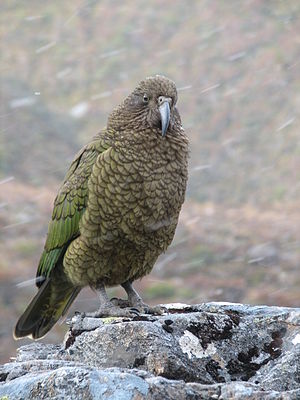 The intelligent, playful birds are under threat from non-native predators and also from farmers who see them as pests
The intelligent, playful birds are under threat from non-native predators and also from farmers who see them as pests Eleanor Ainge Roy
Wednesday 21 September 2016 02.01 BST Last modified on Wednesday 21 September 2016 22.00 BST
The world’s only alpine parrot is at threat of extinction in New Zealand as numbers plummet in the face of threats from non-native predators and human development.
The kea is the world’s only mountain-dwelling parrot and also one of the most intelligent species of bird known for their playfulness and novelty-seeking nature.
The birds, which are considered a pest by many New Zealanders, are only found in the mountains of the South Island in a vast habitat of some 3.5 million hectares.
Conservationists have begun raising the alarm after years of “crashing” population numbers, with the wild kea population estimated to be as low as 1,000-5,000.
Recent studies from the Kea Conservation Trust have found two-thirds of all chicks never reach fledgling stage, as their nests are ground-dwelling and they are eaten by stoats, rats and possums (which the NZ government has pledged to exterminate by 2050).
“Kea are one of the most maligned of New Zealand birds, as well as one of our most loved,” said Tamsin Orr-Walker, chair of the Kea Conservation Trust.
“One of the most interesting things about kea is they are one of the few wild species that seek out humans. That is really rare, and it is that inquisitive nature that is getting them into trouble because a lot of the ways humans interact with them is endangering their survival.”
Orr-Walker said the threat to Kea was three-pronged – from introduced species, lead-poisoning from old-fashioned alpine dwellings such as huts and shearing sheds, and from their interactions with humans.
“Kea are one of the most maligned of New Zealand birds, as well as one of our most loved,” said Tamsin Orr-Walker, chair of the Kea Conservation Trust.
“One of the most interesting things about kea is they are one of the few wild species that seek out humans. That is really rare, and it is that inquisitive nature that is getting them into trouble because a lot of the ways humans interact with them is endangering their survival.”
Orr-Walker said the threat to Kea was three-pronged – from introduced species, lead-poisoning from old-fashioned alpine dwellings such as huts and shearing sheds, and from their interactions with humans.
No comments:
Post a Comment